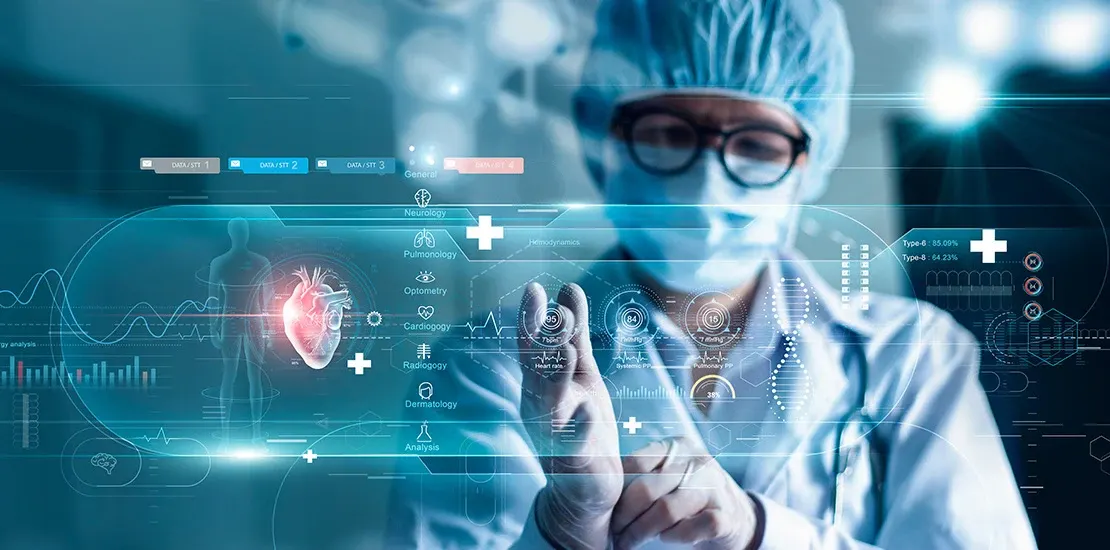September 16th, 2022
Category: ar vr
No Comments
Posted by: Team TA

The acceptance of AR and VR technology is on the rise and the healthcare industry hasn’t been an exception. More and more healthcare companies are preparing to strengthen their digital solutions with this immersive technology for enhanced data analytics and healthcare practices. Some companies even found new ways to establish connections with their patients during pandemic times, providing remote and personalized treatment and care. Others meanwhile use AR and VR to improve their medical training and surgical practices.
Globally, the market for AR and VR technology is expected to grow from $1.2 billion in 2021 to $11.6 billion in 2028; a CAGR of 38.3%. Technological advancement and digitalization in healthcare, rising healthcare expenditure and need, and growing usage in surgical procedures and medical training are some reasons behind this boost in the growth of AR/VR in healthcare.
This cutting-edge technology is now widely used in clinical settings, providing extra information like CT/MRI guidance, and visualization of paths for the clinician during operational procedures. It is also successfully used in medical training by providing 3D visualization of hardly comprehensible structures, and physiology, with the representation of mechanisms in 4D.
Let us explore some ways in which AR/VR technological solutions are going to shape the healthcare industry soon.
Facilitation of Medical Learning and Healthcare Training
One of the key benefits of using the AR/VR technology lies in its capability of improving the quality of medical learning and training of healthcare professionals while driving costs down and enhancing retention and understanding.
Realistic 3D Visualization
The easiest way in which AR-VR technology can neatly fit into the healthcare system is through data visualization. Traditional 2-dimensional teaching methodologies involve static images where the medical student has to rely on their mental images to complete the picture. AR and VR create life-like virtual objects that give the most realistic expression of the human body and help medical professionals to learn physiology and anatomy effectively. It also provides a high-level immersion to the learners as they can interact with the virtual environment realistically, allowing easy manipulations with unlimited repetitions.
Low-risk, High safety, and Cost-effective
VR simulations allow exploring the human body without endangering the patients. Teaching resources like real-life cadavers are limited and storage restrictions. The scarcity of subjects often results in the situation where students could only practice once or twice before the actual procedure. Virtual environments provide valuable ability to explore, make mistakes, learn from them and repeat the procedure multiple times. Even though technology doesn’t replace traditional training in healthcare, it can provide a critical edge by allowing students to learn and perfect skills in low-risk and high-safety conditions. Compared to the cost of setting up an anatomy theater and providing subjects and specimens, the cost of the AR app is relatively low. VR simulators also provide a less expensive opportunity for reproducible training which inspires higher confidence in the learner.
Skill Development Training
An important aspect of medical training purely depends on doing physical tasks such as drawing blood from veins, inserting food tubes, injections, and performing surgeries. The traditional method of learning involves textbooks, slide shows, and also by watching others perform these tasks. AR and VR solutions improve the quality of accuracy and precision of the students by performing these behavioral skills in an immersive environment.
Availability of Expert Guidance and Advanced Learning
AR and VR apps can easily connect remote trainees with their mentors or experts who can assist in real time. Medical professionals also get to learn new and innovative procedures and medicinal novelties which help them to retain more information. In the quickly evolving landscape of medicine, it is equally important to stay ahead of the curve by absorbing all the information to ensure that they are not falling behind.
Shortening of Training Timelines
Instead of having day-long events which are led by physical faculties, learners will be able to learn at the end of their shift or even at home, allowing a shorter training timeline. This was further highlighted by the COVID-19 pandemic which saw a greater shift to online learning, even in medical training.
Not only medical professionals but patients and healthcare providers also derive several benefits from Augmented Reality and Virtual Reality technologies.
Enhanced Patient Care and Education
Hospitals are the places where people do not want to be. Usually, the uncertainty liked to hospitalization can be frustrating and distressful for both patients and bystanders. This is where technologies like AR-VR can be quite useful by providing educational or orientation content that educates and calms them down. This is especially used to provide interactive education to patients who are fearful or skeptical, to understand their condition and the treatment approach. This will impart confidence and trust into patients and help them to make informed decisions.
Virtual Assistance in Facilities
Relevant patient information is one of the important elements for an effective treatment. AR can show the information directly on the patient’s body to point out the problematic places. Body mapping is another process that makes use of AR and VR which is a full recreation of a patient’s body when the case is complicated or when the doctor is physically unavailable.
Enhanced Diagnosis
An efficient and accurate medical diagnosis can be ensured by integrating Artificial Intelligence (AI) into AR and VR. This turned to be especially useful during the pandemic times for self-diagnostics and self-guided treatment which was especially valuable in remote areas.
VR and AR technology is quickly gaining popularity in the healthcare industry. It not only provides high-quality assistance to medical professionals and doctors but also educates healthcare consumers to better care for their health. The immense potential of this technology inspires AR and VR developing companies to build their digital solution for a healthy tomorrow.
If you are in need of any AR/VR technology solutions, contact us at: contactus@travancoreanalytics.com